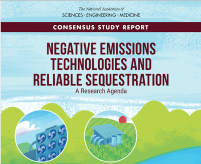Our Planet Needs Carbon Negative Biofuel - Market FAQ
What is Carbon Negative biofuel?
A regular liquid fuel comparable to petroleum diesel with the distinction that the farther you drive the more carbon you permanently remove from the atmosphere.
A simple explanation from the Pacific NorthWest National Lab on conversion of microalgae to biocrude.
Independent third-party assessments are used to confirm the net negative carbon status.
I thought electrification by solar and wind power was going to replace the need for liquid fuels. Will there be continuing demand for liquid hydrocarbon fuels in 21st century?
At Aljadix, we are encouraged that regions such as North America, Europe, Japan and even China are demonstrating reduced growth in demand for liquid fossil hydrocarbon fuels. The reduced growth in demand is definitely good news, and we encourage it.
But don’t be mistaken. The demand for liquid hydrocarbon fuels remains high. Demand is expected to grow for years, and is not expected to actually decline before the middle of the 21 st century. Many sources project continued growth in worldwide fossil crude petroleum from the current 88 million barrels per day (bpd) to the level of 100 million bpd in 2040. Sectors that will sustain demand for liquid hydrocarbons for the foreseeable future include:
Air travel
Plastics and specialty chemicals
Ocean shipping
The sheer inertia of existing fossil fuel transport and industrial systems
Aljadix makes a virtue of this depressing reality. Carbon negative biofuel provides an unprecedented opportunity to enlist those industrial sectors dependent on liquid hydrocarbons in the global effort not only to replace fossil fuel but also to remove carbon from the atmosphere.
Why do we need innovation in biofuel production?
Many excellent low-carbon biofuel business/technical models exist. Feedstock sources such as sugar cane, municipal solid waste (MSW) and used cooking oil support strong commercial models and provide excellent low-carbon fuels. Still, even if all such feedstocks were maximized by 2030, they would provide less than 20% of the liquid hydrocarbon fuel demand in the US, and far less than that worldwide. Further, these are not carbon negative, but only low carbon fuels. Aljadix provides a globally scalable solution that escapes the fundamental resource constraints on biofuel feedstocks and meets the demand for sustainable liquid hydrocarbon fuel.
What do you do with the hydrochar?
The market for hydrochar is in development. It may be used as a soil amendment or in diverse building materials. As the ultimate markets are unpredictable, Aljadix has not yet built any value for hydrochar sales into our commercial plan. Aljadix will work with regulatory bodies to ensure that the carbon captured in hydrochar is credited to the biofuel generated. It may be that the best use of the hydrochar will be simply to bury it, for example, in a disused open-pit mine.
Carbon negative biofuel by Aljadix
Escapes the limitations of land and freshwater highlighted in the “food versus fuel” debate
Solves the challenge of sourcing nitrogen, phosphorous and other nutrients
Overcomes the problem of low Power Density of biofuels
Provides a solution for those industrial sectors dependent on liquid hydrocarbon fuels and recruits them into the global effort to remove carbon from the atmosphere





